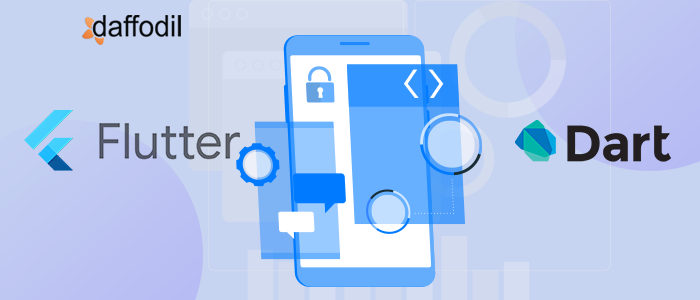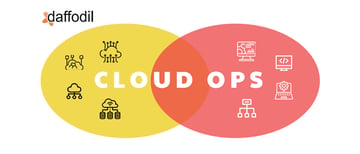
In 2011, Xamarin—a software company now owned by Microsoft—created a framework for hybrid mobile applications with C#. What made this new framework differentiate itself from others is its simplicity in creating a single code base that works across multiple platforms. After this, many frameworks have been introduced on the market, including Ionic, ReactJS, React Native, and many more.
Now, in 2020, we have Flutter — Google's versatile, open-source UI software package for developing native applications for mobile and web, using a common codebase.
Running a beta version since May 2017, Google released the stable Flutter 1.0 in December 2019. Powered by C, C++, Dart, and Skia Graphics Engine, Flutter is the only framework with mobile SDK (as of now) that provides reactive styles without using any Javascript bridge.
Flutter develops all this from a single codebase, directly compiles to the native arm code, and utilizes APIs of the platform. Surprisingly, Flutter refrains from using any of the popular tech stacks.
Before we get into the details of Dart, the programming language used in Flutter, it’s imperative to look into certain aspects that help us to understand better why Flutter uses Dart.
- Flutter’s UI — Within its system, Flutter has built-in adjustments like GUI rendering, animation, and gestures that allow developers full control over each pixelated element on display. This enhanced the ability to create a custom layout.
- Development on Flutter — Flutter is optimized for high-speed creation as it runs without a Javascript bridge. Fast reloading lets developers adjust their coding and witness it unfold in almost real-time, without affecting the app's state.
- Building native apps in Flutter — Apps built with Flutter are compatible with both iOS and Android app stores since they follow platform conventions and interface details such as scrolling, navigation, icons, fonts, and more.
- The programming language — Dart feels a bit like C. But, while C is an imperative programming language, Dart is organized around objects and is a modern object-oriented programming (OOP) language that substantially enhances the flexibility, functionality, and the flow of software development. Dart also boasts standard ratification by Ecma (ECMA-408).
ALSO READ: 10 Amazing Apps Built Using Flutter Framework
What is Dart?
Dart, with its syntax, reminds us of Java or C++. Irrespective of the compilation rules, it supports both Dynamic/Strong and Static/Weak languages, thus enabling even beginners to comprehend the platform with greater ease.
The following are some of the fundamental aspects of Dart that make it indispensable for Flutter.
a. Combines Ahead-of-Time and Just-in-Time Compilation
In creation, developers typically need to decide on a certain kind of compilation for their programming language. That is, whether the program is to be executed before or during runtime. Ahead-of-Time (AOT) compiled programs generally run quicker since they are compiled before execution. However, in reality, with ahead of time compilation, the development itself is decelerated.
Just-in-Time (JIT) compilation, on the other hand, helps quicken development processes but reduces the application’s initialization speed, as the compiler executes the code at or just before runtime.
Overcoming these issues, Flutter uses JIT compilation for development and AOT for launching the application, thus ensuring an optimal end-user experience.
b. Eliminates XML Files
Dart has a declarative and programmable layout that is easy to read and visualize. Hence, Flutter doesn’t require a separate declarative layout language like XML. It is easy for Flutter to provide advanced tooling since all the layout in one language and in a central place.
c. Eliminates the JavaScript Bridge
The application runs seamlessly on a user's gadget as Dart compiles and executes directly into native code, without an intermediary bridge (e.g., JavaScript to Native). This allows Dart to render hitchless animations, while user interfaces are better even at 60fps. Dart can further perform object allocation and garbage collection without the acquisition of locks.
d. Scaffolding
The scaffold in Flutter is very distinct from that of iOS or React Native or even the Android UI. Among other things, it stretches to fill in the space available. Usually, this means it will fill the entire screen of its device window.
The scaffold incorporates APIs for an app bar, a floating button, drawers, and the bottom sheets to enforce the graphic interface arrangement of the primary content design.
e. Incorporates HTTP
To host HTTP resources from the internet, Dart incorporates an abstraction named Future. Here, the http.get() function returns a ‘Future’ that contains a ‘Response’. While the Future is a core class in Dart to deal with asynchronous functions, a future-object reflects a possible value or error and will be visible in the Future at any point.
The Upsides of the Flutter-Dart Combination for the Business
Alongside the above mentioned technical catalysts for the Flutter-Dart combination, there are specific business ‘benefits’ of this approach.
1. Portability
Dart provides a standalone VM that makes use of the language itself as its intermediate language (literally serving as an interpreter and making it a smoother process to port any programming language to any new hardware platform).
As Flutter isn't just a platform but a full SDK, it can function seamlessly with only a screen on nearly every device. By now, third-party terminals for developing Flutter applications for Mac OS, Windows, and Linux have all been created. These terminals include embedding input functions for the APIs, mouse, keyboard, and various plugins.
2. Accessibility
An essential component of the Dart intl package, Flutter provides widgets that simplify accessibility through a broad user base. It recognizes 24 languages, currencies, units of measurement, date and time, interface options (for recognizing variations in language writing style), and so on. Flutter also guarantees web accessibility, while its UI enables:
- Large fonts
- Screen readers
- Sufficient contrast
ALSO READ: React Native VS Flutter: A Vis-a-Vis Comparison between the Titans
Final Words
Flutter and Dart go along very well. The only downside is that, if you have iOS or Android developers, and they wish to learn Flutter, they might have to undergo a learning curve.
Yet, the leap could be worth it!
Last but not the least, in Flutter-Dart combination, developers can effortlessly incorporate features like camera or photo gallery, which is a boon for digital marketers, brands, and the likes.
Planning to build an app using Flutter? Connect with our tech-experts through 30-minute free consultation session.



